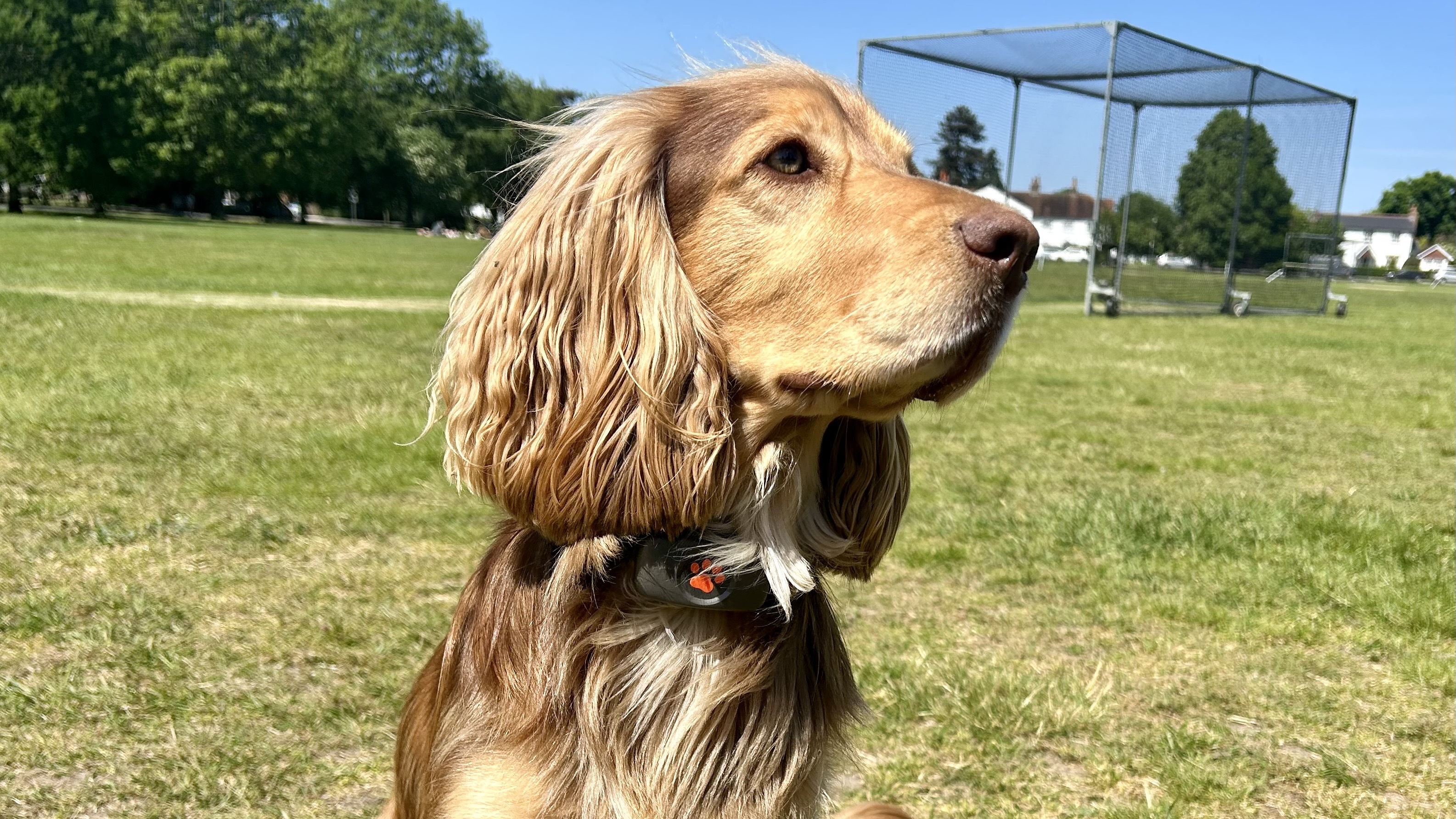
As a fitness editor and a marathon runner, it was only a matter of time before I started tracking my dog’s steps, as well as my own. My partner has joked for years that I’m one step away from buying our cocker spaniel, Toby, one of the best fitness trackers, or setting him up a Strava account, so when the PitPat GPS tracker landed on our doorstep, the best he could muster was a quiet ‘of course you have’.
Undeterred, I strapped the little tracker to Toby's collar and set out for a run around our local woods. After a week of testing, Toby had clocked a total of 62 miles with the device — which is a hell of a lot further than I'd run. Here are the pros and cons of the dog tracker and what surprised me most.
PitPat GPS dog tracker: The pros
It was easy to set up
You don’t have to be particularly tech-savvy to set the PitPat tracker up — it comes in a box with a wireless charging pad, and you simply pop the tracker on the pad to charge it (the four pads on the dog paw logo fill as it charges, which is a nice touch). The Qi Certified charging pad can also charge your iPhone, which is handy.
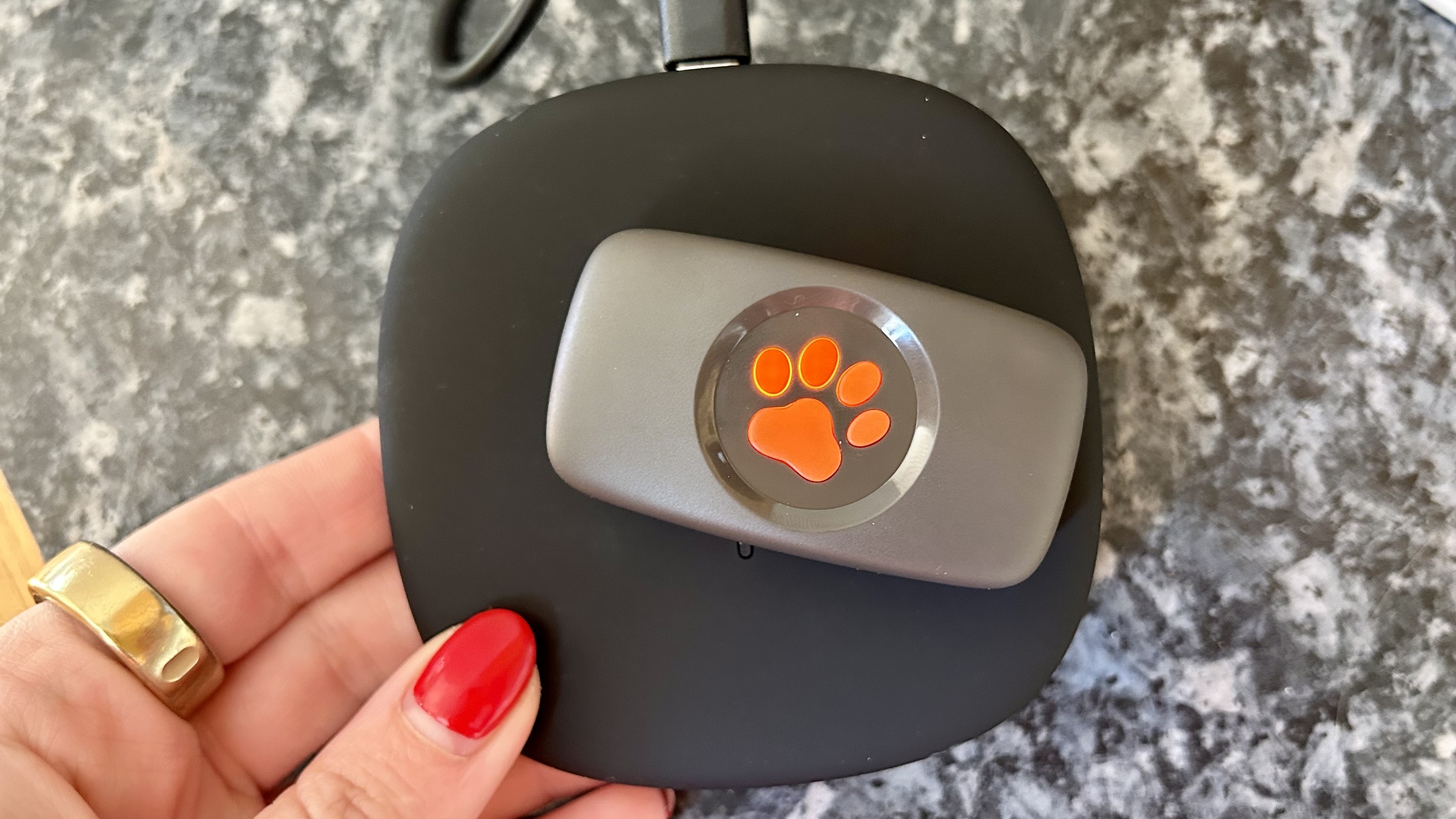
After this, you connect the tracker to the PitPat app, input your dog’s breed and weight data, strap the tracker to your dog’s collar or harness, and you’re good to go. I’d say the entire process took about 15 minutes.
Another plus with the PitPat is that both myself and my partner could see Toby’s data from our phones. In fact, I can share his data with my entire family, although judging by the response I get from my ‘pup-dates’ in the family WhatsApp, I doubt they’d be too interested.
Unlike other GPS dog trackers on the market, you don’t need to pay a monthly fee to see your dog’s data on PitPat. Once you’ve bought the $199/£149 tracker and connected it to your phone, there aren’t any additional costs. PitPat also makes a cheaper activity tracker, which I purchased before this one, but it doesn’t track GPS.
I can see where Toby is when I’m in the office
On days when I travel to the Tom’s Guide office in London, Toby goes out with a dog walker. The GPS tracker allowed me to see exactly where Toby was, even though I was sitting in an office 17 miles away.
The tracker determines your dog’s location using satellite signals, which are transferred to PitPat’s HQ every 2, 4, or 8 minutes. When you press on the ‘Find my dog’ button in the PitPat app, the next time the tracker connects to PitPat HQ, they tell it to connect to GPS, and you can see your dog’s location. Every 10 seconds or so, the tracker sends an updated location, and after 10 minutes of tracking, GPS turns off.
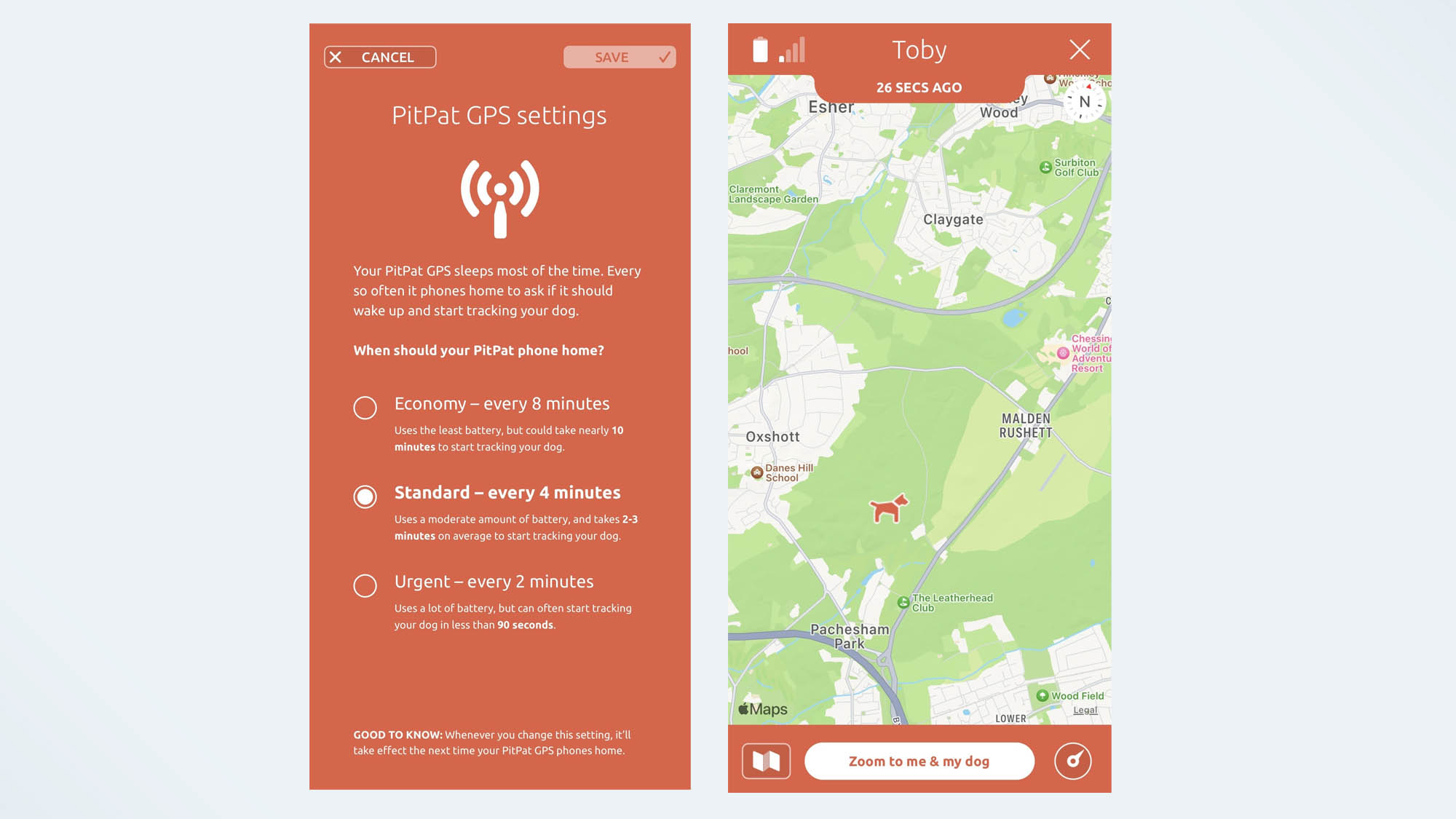
This does mean that there is a slight delay between clicking on the app, and seeing your dog’s location. PitPat also says if your dog is in an area with a bad cellular connection, you might struggle to see your dog’s live location. I live in an area with a notoriously bad network (I can’t even get 3G in my house), and didn’t have any issues finding Toby, although on some occasions it probably took longer than four minutes. PitPat has a 21-day returns policy, so if you find it doesn’t work for you, you’ll be able to get your money back.
Despite not being able to test the signal strength before you fork out for the GPS tracker, I’d argue that GPS is still more reliable than some of the Bluetooth trackers on the market. I’ve seen a lot of people using AirTags on their dog’s collars, but with these, you’re reliant on someone with an iPhone being near your dog to get a signal. While Toby has great recall, I’m reassured that should he run off, the GPS tracker would allow me to see where he is, and be able to keep tracking him.
It allowed me to keep an eye on his nutrition
Without entering into the minefield that is pet nutrition, the PitPat allowed me to see, at a glance, how many calories Toby was burning each day. This ranged from 783 on one of his least active days (he walked 7.1 miles in total), to 1,099 on his most active (he ran/walked 15 miles). Like humans, the amount of calories a dog needs varies depending on breed, weight, and activity levels, but the PitPat helped me see at a glance whether he should have an extra half scoop of kibble with his dinner.

The PitPat displays all of your dog’s data in an easy-to-understand chart. In the middle, you have your dog’s active minutes, which are then broken down into minutes spent running, walking, and playing. You can also see how many hours your dog has spent ‘pottering’ and ‘resting’, as well as how many calories your dog has burnt, and how many miles he or she’s traveled. There's an overall activity timeline as well. We take Toby’s collar off when he’s in the house, so while we don’t get accurate data on how well he’s slept at night, it gives us a good idea of how much exercise he’s done each day.
So far, it’s spaniel-proof
Toby is a high-energy cocker spaniel, who spends 90% of his walks running after a ball, jumping in any water he can find, or crashing through the forest. The PitPat weighs around 30g and measures about 2.4 inches by 1.3 inches. I’ll admit, I didn’t have high hopes for the plastic tracker, or the velcro it came with to attach to his collar, but so far, so good.
In a week of testing the tracker has successfully survived being submerged in a river, rolled through cow manure (and subsequently washed in the kitchen sink), and knocked several times a day as Toby plays with other dogs.
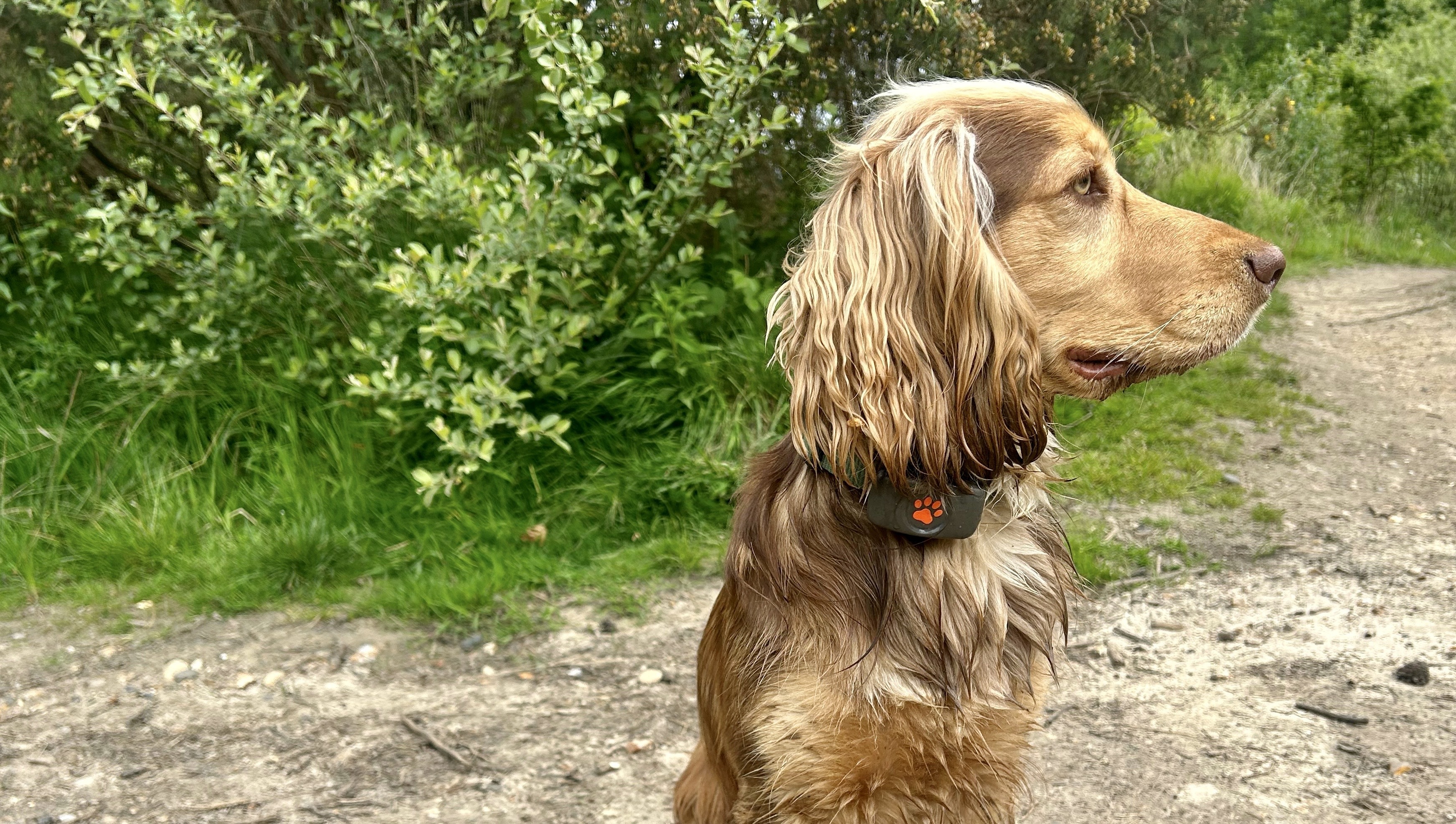
PitPat GPS dog tracker: The cons
It wasn’t 100% accurate at first
PitPat calculates your dog’s distance travelled by guessing the average stride length, depending on breed and age. Toby is a mix of working and show cocker spaniels, and is particularly large for his breed. On the first few runs with the PitPat, I found I had run further than Toby, which definitely wasn’t the case, as unlike me, he deviates from the path. For instance, he would run back to sniff something, then sprint to catch me up.
Luckily, there’s a quick fix. If you click ‘Tune distance estimate’ on the PitPat app, you can increase or decrease the estimate. I increased Toby’s by 40% and found that it was about right on my next run with him.

I wish I could see maps of where he’s been
Another downside is that you can only see how far your dog has traveled, not where they have been. You also can’t set the tracker to record a certain activity, so my dreams of seeing a GPS map of Toby’s activity on a walk have been dashed.
It’s another thing to remember to charge
Despite working for a tech brand, I constantly leave the house with my various devices in low battery mode. Try as I might, I can’t seem to remember to plug my tech in at the end of the day.
During my week of testing, I charged the PitPat once, before realizing I could make my life easier by changing the GPS settings on the device. As you can’t turn the PitPat off, it ‘phones home’ every few minutes, to ask if it should wake up and start tracking your dog.
With the standard setting, it phones home every four minutes, then takes 2-3 minutes on average to start tracking your dog. There's also an urgent setting that phones home every two minutes, tracking your dog in 90 seconds, and an economy setting that phones home every eight minutes, but takes nearly 10 minutes to start tracking.
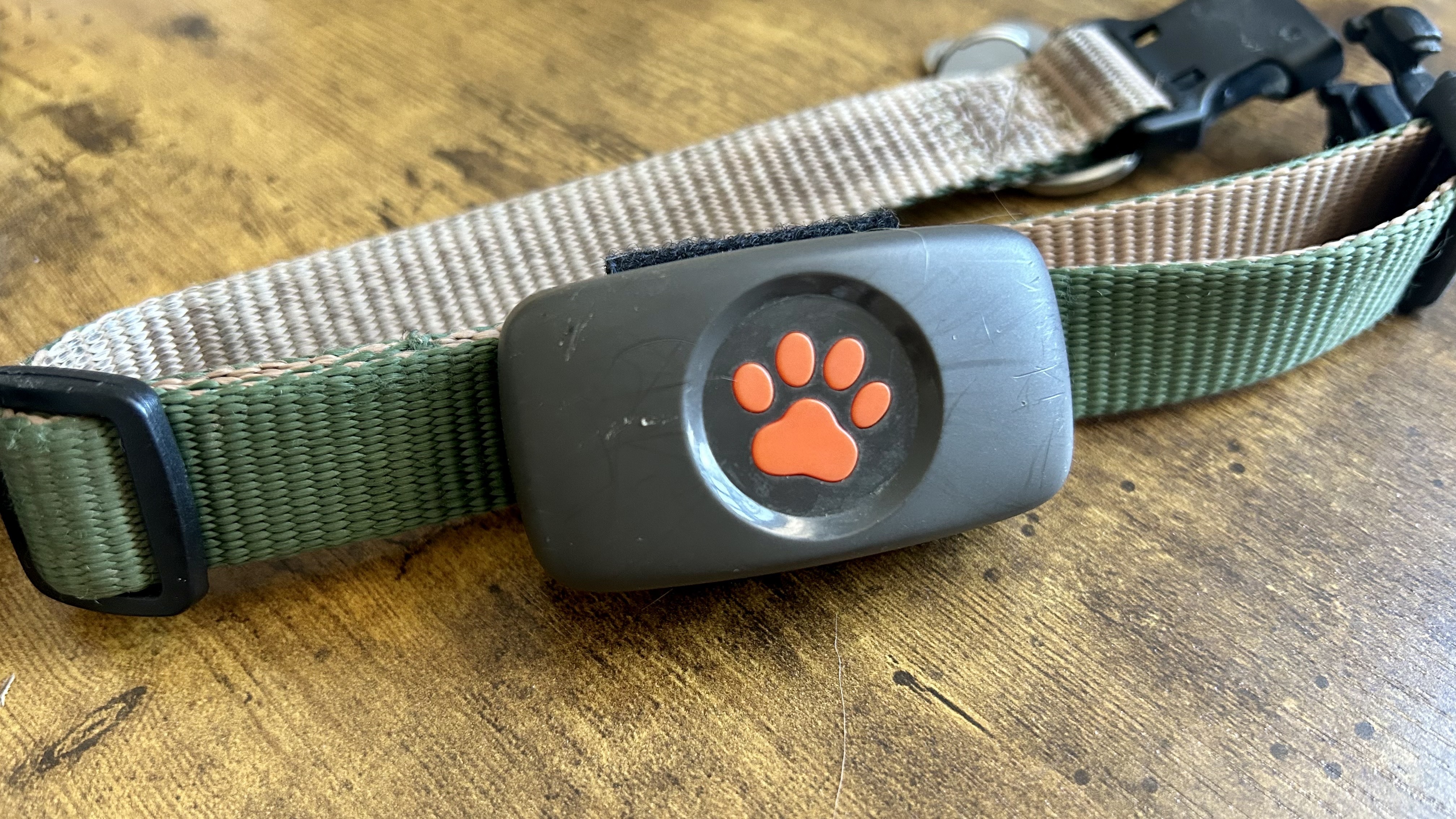
As Toby is glued to my side most of the time, the economy mode works fine for me, but if your dog is out of the house and you want faster GPS tracking, be prepared to charge the tracker more.
My verdict after a week of testing? While this definitely isn’t an essential every dog owner will need, I’ve become addicted to tracking Toby’s data each day. I also love the peace of mind the GPS tracker gives me that if Toby should chase a squirrel and lose me on a walk, I’d be able to get updates on his live location. Whatever your reasons for buying a dog GPS tracker, this is one worth looking at. Now, back to finding a way to make Toby a Strava account…






